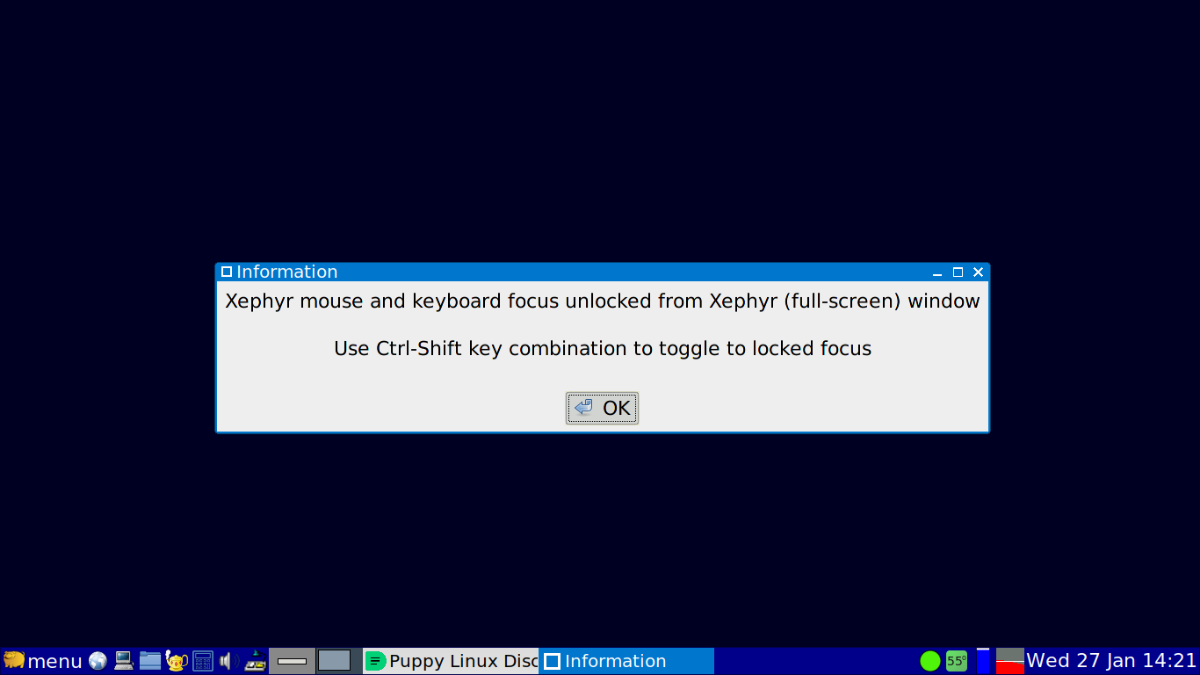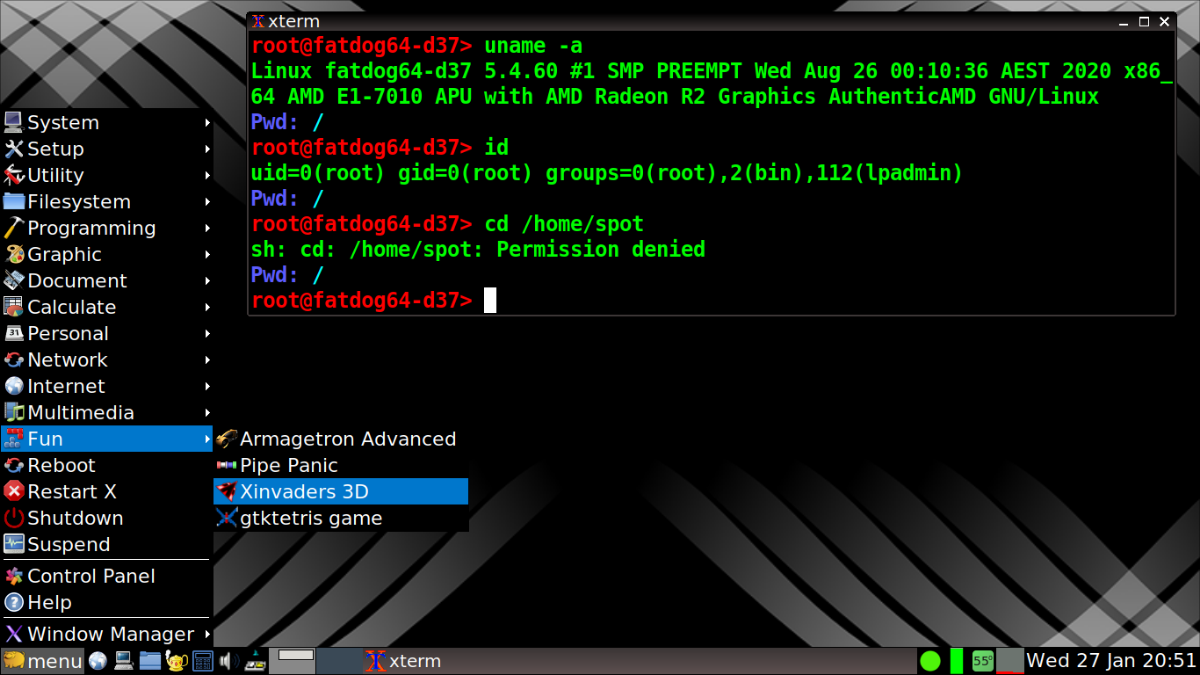s243a wrote: Mon Jan 25, 2021 7:23 am
rufwoof is also using cwm but my current code uses jwm. I did add a switch stement where if one changes the WM parmater (currently hardcoded) than rufwoof's cwm code will be executed. I also added some of his code related to window monitoring but this code isn't yet executed. My motivation here is to lean from what rufwoof is doing and in the future provide more options.
So while these changes were primarily geared to code alignment, mysteriously they fixed bugs in my previous example release. The jwm menus now work as they should. So while, the intent here is for a chrooted iron browser, it looks like that much more of the Slacko 571 / Slacko 5.7.2 (by Sailor's and Mikeslr respectively). capabilities are apparent in the Xephyr gui. Since it boots in full screen mode one might thing they are actualy in Slacko 571/5.7.2 until they hit the alt-tab key.
I've swapped over to using jwm now myself
viewtopic.php?p=16047#p16047
With some additional key codes defined in .jwmrc
Code: Select all
<Key mask="A" key="space">window</Key>
<Key mask="CA" key="Down">exec:amixer -c 1 set Master 2%-</Key>
<Key mask="CA" key="Up">exec:amixer set -c 1 Master 2%+</Key>
<Key mask="CA" key="Return">exec:xterm</Key>
<Key mask="CA" key="m">maximize</Key>
<Key mask="CA" key="x">close</Key>
it can be made very cwm'ish
It's working well. One factor is that Fatdog's jwm setup is preventing rox desktop being run, but I'm not a great user of desktop icons anyway - I rather use the tray to hold the icons I more often use. Otherwise its working very well for me.
Usually when loaded the alt-tab key steps between main session windows, of which the Xephyr is one. Xephyr however has a hard coded Ctrl-Shift key combination that toggles locking the mouse/keyboard into the Xephyr window, or releasing it. If Xephyr is started as a window rather than full screen then its window title shows that key combination and state, but when full screened you obviously don't see that. So I experimented with different ways to indicate the mouse/keyboard locked/unlocked state and finally opted to just have a systray icon - a ball that is coloured green if unlocked, blue if locked.
So for instance when locked then alt-tab will step just between windows within the Xephyr session/(full screen) window, if unlocked then alt-tab steps through the main sessions windows, of which the Xephyr window is just one. If the ball is clicked then I have it just present a information box

- s.png (88.79 KiB) Viewed 3157 times
Very usable as a desktop, so much so is I pretty much use it solely as my desktop (started as part of ~/Startup). But that's very contained/restricted in what any hack might achieve. For ssh'ing I flip back into the main session (Fatdog, that uses OpenBox/lxqt panel) where data is also stored. I use /home/shared within the 'container' that appears as /mnt/sda4/shared in my case in the main session, for moving files between the two.
As the sfs, changes and top folders that are used to set up the container are in a ext HDD another benefit is that there's no memory constraints involved. cd to /root and dd a massive file and that won't stop because ram is exhausted but instead just works, at least up to the limits of available disk space.
In effect 'root' is just the userid name of a restricted user, that is running within its own X, isolated from the main session (real root) X session, and that has restricted access to mounting or even viewing files/folders outside of the chroot within which it resides.
My present code runs things on a one-off throw-away basis i.e. the contents of 'changes' are simply removed when the container is exited. That could easily be modified to leave the contents, so that you'd resume the session as last left off, or with the option to remove the content before starting to 'start clean'. Or as EasyOS does, make sfs copies of the content so that you might 'snapshot' a session, perhaps start clean after that, and then later 'restore' (unsquashfs) the snapshot copy to revert back to that.
EDIT: After some tidying up, I'm using a darker jwm theme

- s1.png (300.71 KiB) Viewed 3146 times

